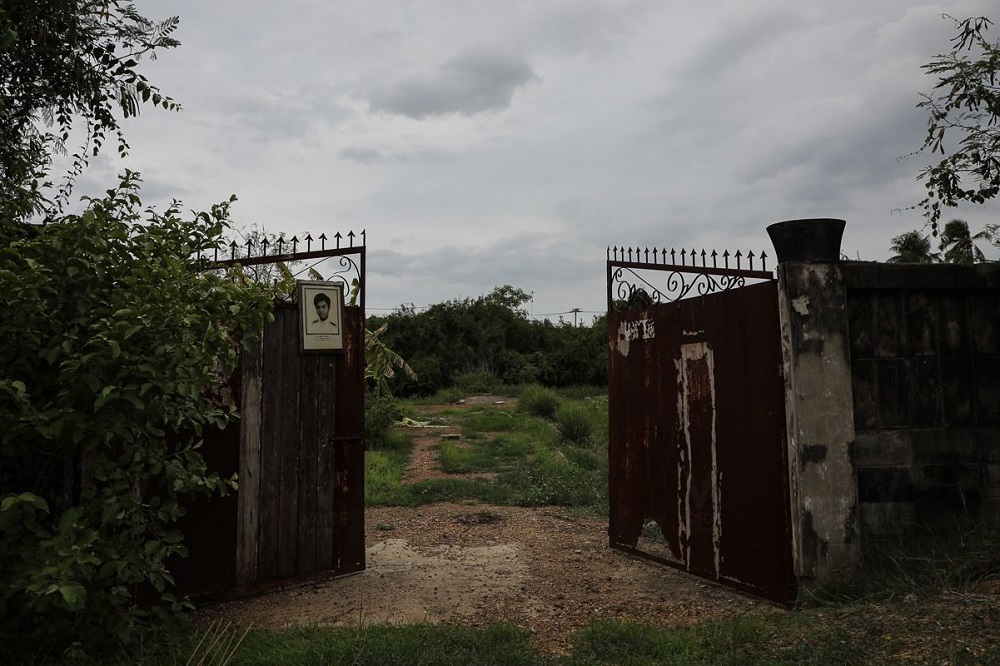By Pravit Rojanaphruk and Sunantha Buabmee
BANGKOK — After 42 years, an iconic symbol of the brutalities which led to the 1976 massacre is finally under preservation.
Last month, a group of academics and activists secured “the Red Gate”, a rusty metal sliding gate of a semi-rural residence in Nakhon Pathom province, where two activists were lynched in 1976 – an event that later spiralled into what many historians consider the darkest chapter of Thai political history.
“No one thought the gate was still standing,” political scientist Puangthong Pawakakapan, who coordinates an effort to preserve evidence related to the massacre, said in an interview. “Everyone thought the owner must have dismantled the gate.”
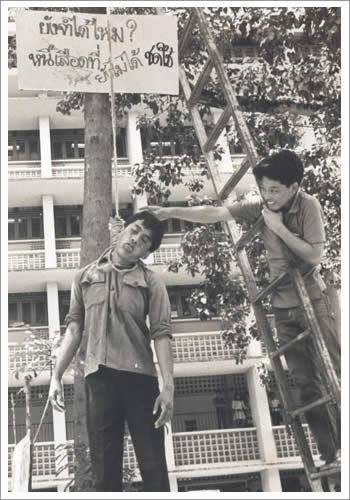
It was on this gate that two employees of the state electrical authority, Vichai Kaetsripongsa and Chumporn Thumthai, were found hanged on Sept. 24, 1976. Just before their deaths, they had put up posters denouncing a former military dictator’s return to Thailand from his overseas exile.
Two weeks later, student activists at Thammasat University staged a mock hanging to condemn the murders. But the play ended up enraging rightwing militias after one of the students seemed to bear an uncanny resemblance to then-Crown Prince Vajiralongkorn.
More murders and more lynchings broke out on Oct. 6, when police commandos and paramilitaries stormed the university, partly to avenge the perceived royal insult in the mock hanging. Official records say 46 people died, though some experts believe the actual toll was much higher.
The backdrop to that bloody chains of events then slipped away from history, until Puangthong and her team managed to track it down earlier this year. In June, researchers finally removed the gate for future museum display. The owner, Nitinai Kanuenghet, 67, agreed to swap the gate in exchange for a new one.
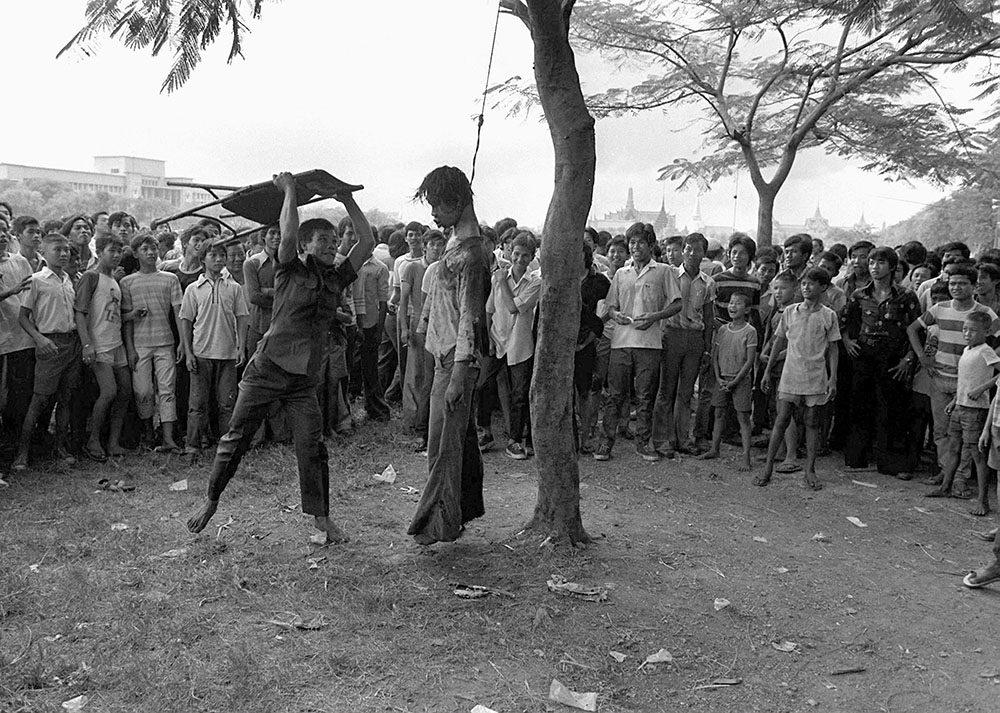
“It’s a historical relic … Thai society often does not preserve such objects, however. It tells a story of violence,” Puangthong said. “Seeing the gate elicits more of a reaction than merely reading a document. It can be installed to display and retell the story of Oct. 6.”
Puangthong, who teaches at Chulalongkorn University and helps run an online archive about the massacre, added that her organization still lacks the funds to establish a museum of human rights to put the gate on permanent display.
Nevertheless, they are looking to hold an exhibition with the Red Gate as a headline item this October to mark the massacre’s 43rd anniversary.
‘I Don’t Want to See It’
Nitinai, the owner of the gate and the three-rai compound it stood on, is not so sentimental about the red gate.
The property belonged to his late father and Nitinai wasn’t around when the bodies were discovered hung from the gate in 1976. Nitinai said he had no problem “befriending the spirits” of the two and never saw a need to replace the originally greyish-blue gate, which turned reddish from rust over the years.
Nitinai is satisfied that the red gate has found a new home where it can serve as a reminder of what occurred four decades ago.
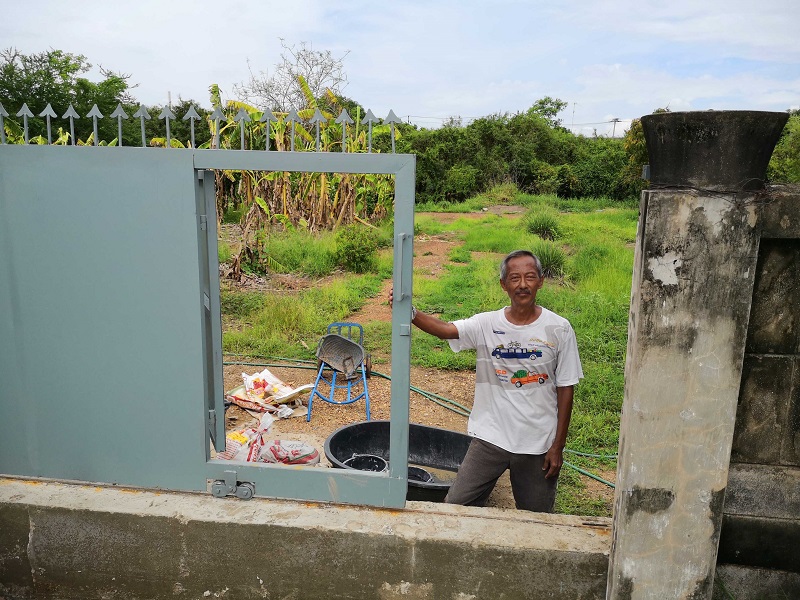
“Thais are forgetful. Even my forty-year-old gate was forgotten,” he said.
Most of his neighbors have no clue about the gate’s importance.
“Once an era is over, people forget … Then it’s over,” Nitinai said. “It’s like a cycle, like being in a loop.”
But a relative of one of the two lynched activists said he has never forgotten the memories.
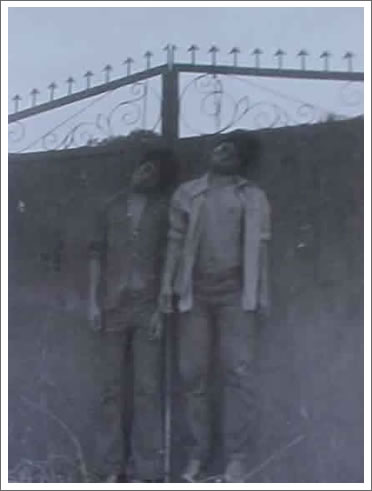
“It’s good that they took it. But I don’t really want to see it because it reminds me of the [newspaper] photos,” said Prayoon Kaetsripongsa, a 77-year-old retired school teacher from Buriram province, referring to postmortem photos of his late younger brother, Vichai.
“The pictures showed protruding tongues … It must have been really excruciating,” he recalled in a recent interview.
The brother of the other murdered campaigner, Chomporn, said he is delighted that a piece of that painful history has been saved as a reminder of state atrocities. Five policemen were arrested in the aftermath of the hangings but none were sentenced to prison. Today, archivists have failed to locate any of them.
“Privately, I feel sadness and sorrow, but let it be put on display,” Chumpol Thumthai said by phone. Chumpol himself is a retired police officer now living in his home province of Ubon Ratchathani.
Although it’s been over forty years since the massacre, Chumpol said he can’t help noting that a similar cycle of political violence is making a return to Thailand today, citing last week’s brutal assault on pro-democracy activist Sirawith “Ja New” Seritiwat.
Critics of the junta believe the attack was part of a campaign by the regime to terrorize its enemies – some compared it to the street thuggery that targeted activists in 1976 – but the military government vehemently denies any involvement.
“They tried to kill him. I am worried about the military,” Chumpol said.
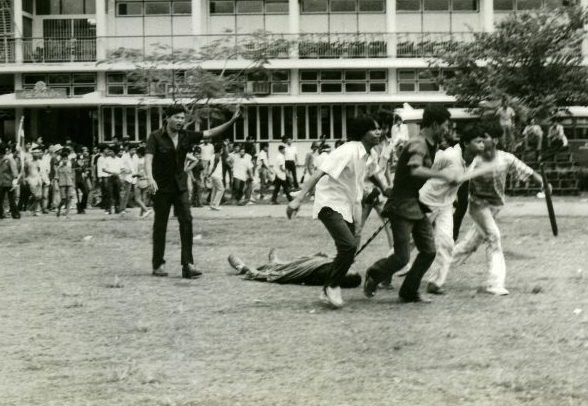
Related stories:
Thammasat Massacre Relived in 40 Years of Arts & Culture


































